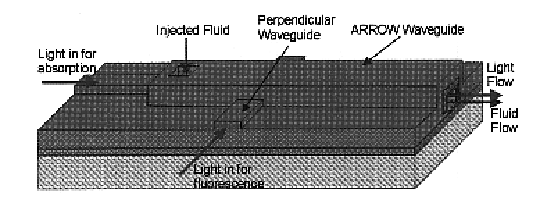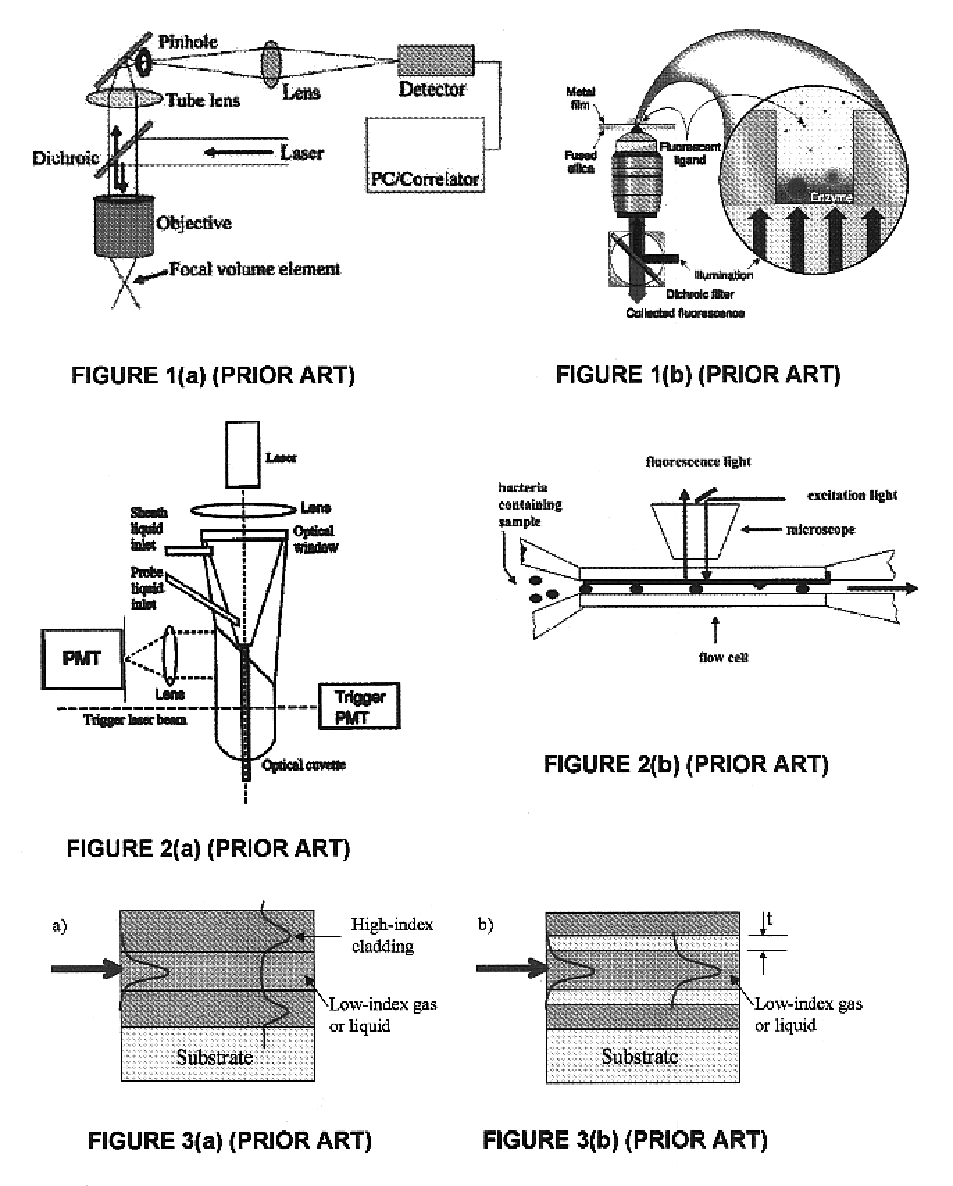Apparatus for optical measurements on low-index non-solid materials based on arrow waveguides
a technology of arrow waveguides and optical measurements, applied in the field of integrated optics, can solve the problems of large parallelism, inability to easily scale up to multiple sample volumes, and bulky setups in natur
- Summary
- Abstract
- Description
- Claims
- Application Information
AI Technical Summary
Benefits of technology
Problems solved by technology
Method used
Image
Examples
Embodiment Construction
[0046]Overview
[0047]Currently, cutting edge optical studies of biological agents such as DNA molecules or cells do not take advantage of the established technologies that have made optoelectronic and photonic integrated circuits so successful. Optical setups for biomedical applications typically involve bulky three-dimensional setups and often times the use of microscope objectives for excitation and / or collection. The main reason behind this fact is the inability to guide light through the media in which the cells and molecules are hosted (typically aqueous solutions or gas phase), as these media have lower refractive indices than the surrounding solid-state material.
[0048]Here, we present the invention of a radically different approach to creating an experimental platform for optical studies on non-solid-state materials. By using specially designed multi-layer optical waveguides, it is possible to guide light through low-index media over macroscopic distances which will enable opt...
PUM
| Property | Measurement | Unit |
|---|---|---|
| width | aaaaa | aaaaa |
| diameter | aaaaa | aaaaa |
| length | aaaaa | aaaaa |
Abstract
Description
Claims
Application Information
 Login to View More
Login to View More - R&D
- Intellectual Property
- Life Sciences
- Materials
- Tech Scout
- Unparalleled Data Quality
- Higher Quality Content
- 60% Fewer Hallucinations
Browse by: Latest US Patents, China's latest patents, Technical Efficacy Thesaurus, Application Domain, Technology Topic, Popular Technical Reports.
© 2025 PatSnap. All rights reserved.Legal|Privacy policy|Modern Slavery Act Transparency Statement|Sitemap|About US| Contact US: help@patsnap.com



